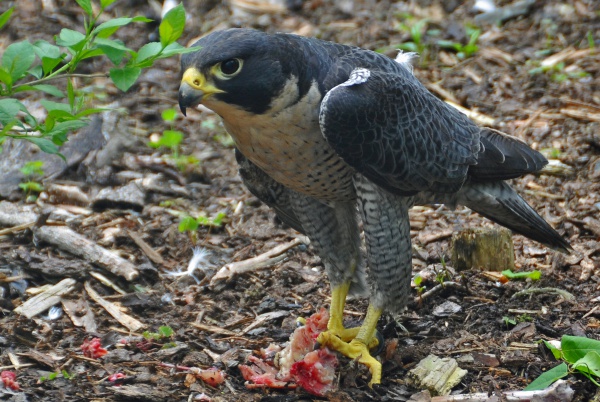Facts About Peregrine falcon
The peregrine falcon, a member of the Falconidae family, is celebrated for its astonishing speed and hunting prowess. It can reach speeds exceeding 320 km/h (200 mph) during its iconic dive, known as a stoop, making it the fastest bird and animal on Earth. These birds have an extensive breeding range, spanning from the Arctic to the tropics, and can be found almost everywhere except in extreme polar regions and certain tropical rainforests.
Once threatened by pesticides like DDT, peregrine falcons have made a remarkable recovery thanks to dedicated conservation efforts and captive breeding programs. Today, their populations are flourishing once more.
In terms of appearance, peregrine falcons exhibit sexual dimorphism, with females being larger than males. Their diet primarily consists of medium-sized birds, but they will occasionally hunt small mammals, reptiles, or insects. These birds form lifelong pairs and typically nest on cliff edges or tall structures, displaying strong territorial behavior during the breeding season.
Peregrine falcons have been highly valued in falconry for thousands of years due to their exceptional hunting skills, trainability, and versatility. They are particularly adept at hunting a variety of game birds.
Their successful recovery is a true conservation triumph. Peregrine falcons have adapted well to urban settings, nesting on tall buildings and bridges, and hunting feral pigeons. As a result of their resurgence, they are no longer considered endangered in many regions.
Culturally, peregrine falcons symbolize power and nobility in various societies and are the national animal of the United Arab Emirates. They have also been featured in literature, such as J.A. Baker's highly regarded book "The Peregrine" which provides detailed observations of these birds in their natural habitat.

 Tanzania
Tanzania